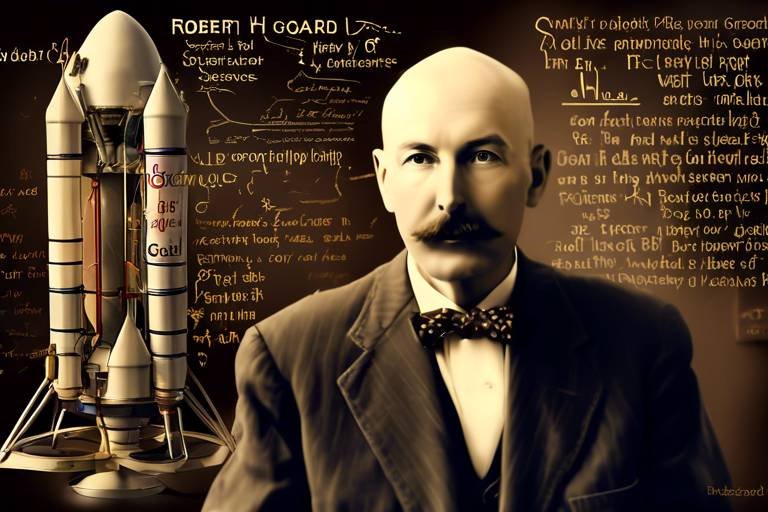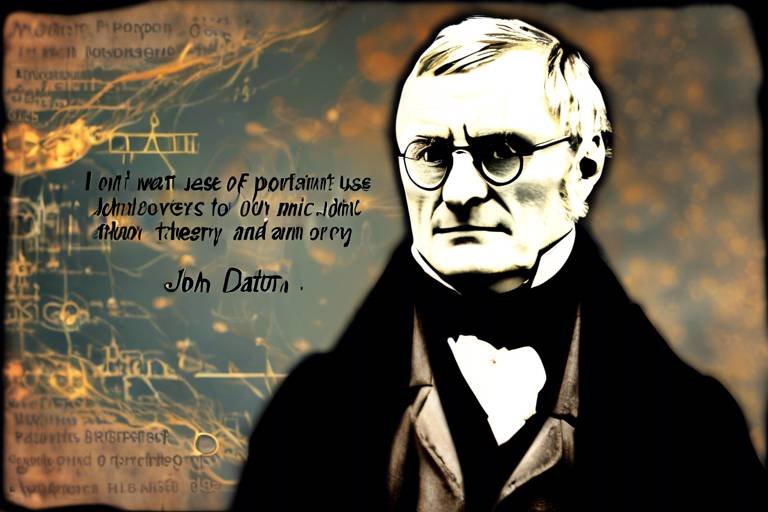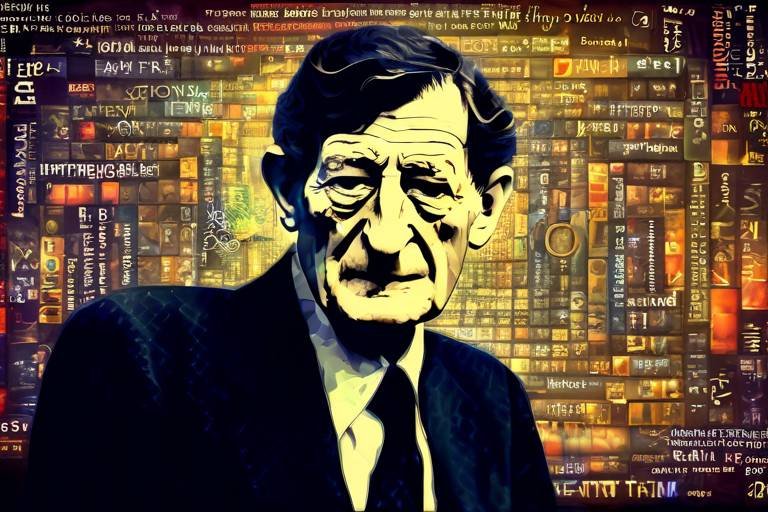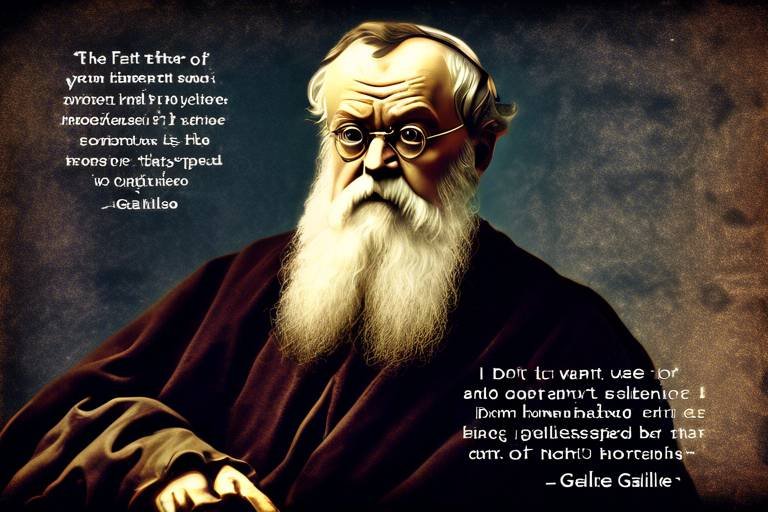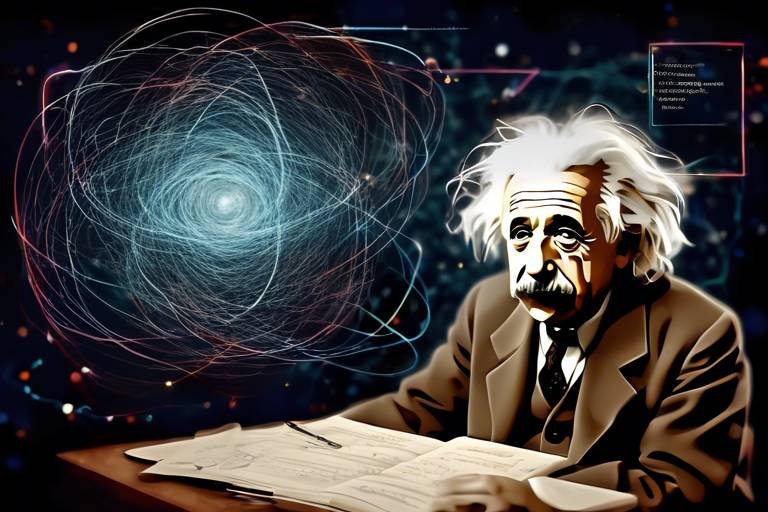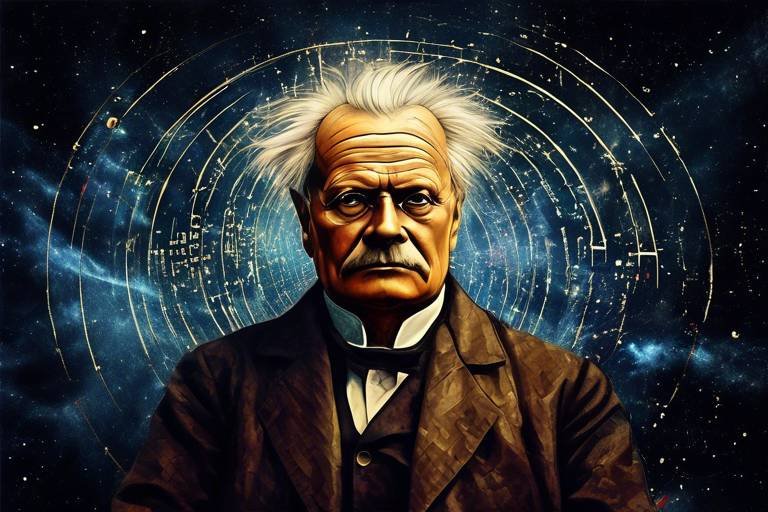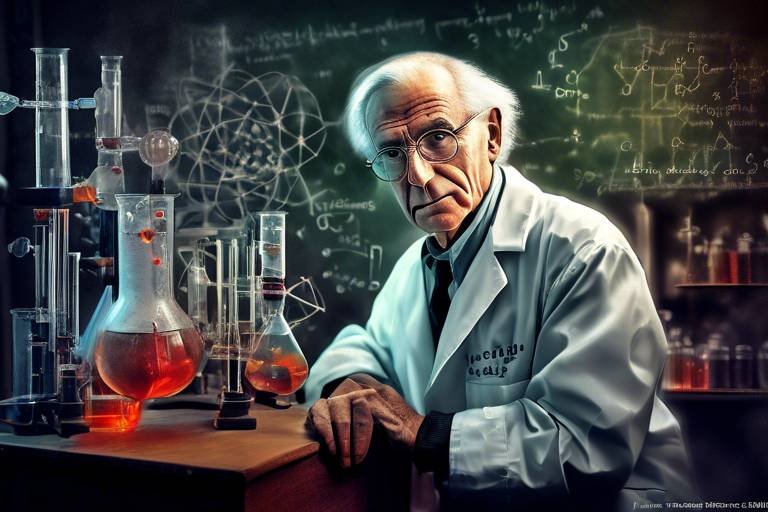The Life of Robert H. Goddard and Rocket Science
Have you ever looked up at the night sky and wondered what lies beyond the stars? The story of Robert H. Goddard is a thrilling journey into the world of rocketry, a tale of innovation, struggle, and triumph that has paved the way for modern space exploration. Born on October 5, 1882, in Worcester, Massachusetts, Goddard was not just a dreamer; he was a man of action who transformed his visions into reality. His relentless pursuit of knowledge and passion for physics led him to become one of the most influential figures in the history of space travel. This article delves into Goddard's remarkable life, his groundbreaking inventions, and the challenges he faced, all of which contribute to the legacy that inspires scientists and enthusiasts around the globe.
From a young age, Goddard exhibited an insatiable curiosity about the world around him. He spent countless hours experimenting and reading, which laid a strong foundation for his future endeavors. His academic journey began at Worcester Polytechnic Institute, where he earned a degree in physics. Goddard's thirst for knowledge didn't stop there; he pursued further studies at Columbia University, immersing himself in advanced physics and engineering. It was during these formative years that he began to dream of reaching the stars, envisioning a future where humanity could explore the cosmos. Little did he know, his dreams would soon take flight.
Goddard's inventive spirit was the driving force behind numerous innovations in rocket technology. He was not just tinkering with existing ideas; he was revolutionizing the field. One of his most significant contributions was the development of liquid-fueled rockets. This groundbreaking advancement allowed rockets to achieve greater efficiency and power, setting the stage for future advancements in space travel. Imagine trying to propel a vehicle using only solid fuels; it’s like trying to drive a car with a flat tire! Goddard understood that in order to reach new heights, a new approach was necessary, and he was determined to find it.
In 1926, Goddard achieved a historic milestone that would change the course of history forever. He successfully launched the world's first liquid-fueled rocket in Auburn, Massachusetts. This small, 10-foot rocket soared to an altitude of 41 feet, a feat that may seem modest today but was monumental at the time. It demonstrated the feasibility of rocket propulsion and ignited interest in space exploration among scientists and the public alike. Picture the excitement in the air as onlookers witnessed this daring experiment; it was a moment that sparked a flame of curiosity that continues to burn brightly.
But as with any great endeavor, Goddard faced numerous technical challenges. Fuel efficiency and stability were constant hurdles that he needed to overcome. Each failure was a lesson learned, and Goddard approached these setbacks with a relentless determination. He spent countless hours in his workshop, experimenting with different materials and designs, always pushing the boundaries of what was possible. His resilience is a testament to the spirit of innovation; it reminds us that failure is not the end but rather a stepping stone to success.
Despite his groundbreaking achievements, Goddard's ideas were often met with skepticism from both the scientific community and the public. Many dismissed his visions as fanciful dreams, leading to struggles for funding and recognition. Imagine pouring your heart and soul into a project only to have others doubt your capabilities! Yet, Goddard navigated these challenges with unwavering conviction and a firm belief in his vision. His journey teaches us the importance of perseverance in the face of adversity, a lesson that resonates even today.
During World War II, Goddard's expertise in rocket technology took on a new dimension as he contributed to military advancements, including the development of missiles. His work showcased the dual-use potential of his research, demonstrating how innovations intended for peaceful exploration could also serve national defense. This intersection of science and military application raises important questions about the ethical implications of technological advancements, a debate that continues in our modern world.
Robert H. Goddard's legacy extends far beyond his lifetime. His pioneering work inspired future generations of scientists and engineers, laying the foundational principles that would eventually lead to the space race and modern space exploration. The very rockets that propel astronauts into space today owe their existence to Goddard's pioneering spirit. His story is a reminder that with innovation, perseverance, and a touch of imagination, we can reach for the stars.
Despite facing challenges during his career, Goddard received posthumous recognition for his contributions. Various awards and institutions were established in his honor, solidifying his place in history as a key figure in aerospace engineering. The Goddard Space Flight Center is just one testament to his enduring influence, serving as a hub for innovation and exploration.
Today, Goddard's pioneering work continues to inspire contemporary rocket scientists. His story serves as a source of motivation, reminding us that the pursuit of knowledge is a noble endeavor. As we look to the future of space exploration, we can draw lessons from Goddard's life about the importance of creativity, resilience, and the unwavering quest for understanding the universe.
- What was Robert H. Goddard's most significant achievement? His launch of the world's first liquid-fueled rocket in 1926 is considered his most significant achievement.
- How did Goddard's work influence modern rocketry? Goddard's innovations laid the groundwork for modern rocket technology, including the principles of liquid fuel propulsion.
- Was Goddard recognized during his lifetime? While he faced skepticism, he gained some recognition, but much of his accolades came posthumously.

Early Life and Education
Robert H. Goddard was born on October 5, 1882, in Worcester, Massachusetts, a place that would witness the blossoming of a mind destined to change the world. From a young age, Goddard exhibited an insatiable curiosity about the universe around him. He was particularly fascinated by the concepts of flight and space, often gazing at the stars with dreams of reaching beyond the Earth’s atmosphere. This early passion for the skies was nurtured by his family, especially his mother, who encouraged his scientific inclinations.
Goddard's academic journey began at Worcester Polytechnic Institute, where he pursued a degree in physics. His time at WPI was transformative; he immersed himself in the study of mathematics, physics, and engineering, which laid the groundwork for his future innovations. During his studies, Goddard was not just a student; he was a thinker, often conducting experiments that would later influence his groundbreaking work in rocketry. After earning his bachelor’s degree in 1908, he continued his education at Columbia University, where he obtained his Ph.D. in 1911. His doctoral thesis focused on the mechanics of rockets, a subject that would soon become his life's work.
Throughout his educational career, Goddard was known for his innovative thinking and relentless pursuit of knowledge. He often pushed the boundaries of conventional science, seeking answers to questions that many deemed impossible. His professors recognized his potential and encouraged him to explore the uncharted territories of physics, particularly in the realm of propulsion. Goddard's early experiments with rocket propulsion were met with skepticism, yet he remained undeterred, driven by a vision that few could comprehend at the time.
In addition to his formal education, Goddard was an avid reader and researcher. He delved into various scientific publications, absorbing knowledge from diverse fields such as chemistry and engineering. This broad spectrum of knowledge would prove invaluable as he began to develop his own theories and designs for rockets. His early life was a testament to the idea that curiosity, education, and a bit of imagination can lead to groundbreaking discoveries. Goddard's formative years were not just about learning from books but also about applying that knowledge in practical ways, experimenting with materials, and understanding the principles of flight.
In summary, Robert H. Goddard's early life and education were marked by a profound curiosity and a commitment to pushing the boundaries of what was possible in science. His academic achievements and innovative spirit laid the foundation for his future as a pioneer in rocket science, inspiring generations to come. The challenges he faced during his educational journey only fueled his determination to succeed, proving that with passion and perseverance, one can indeed reach for the stars.

Pioneering Rocketry Innovations
Robert H. Goddard was not just a dreamer; he was a visionary who transformed the realm of rocketry through his relentless pursuit of innovation. His inventive spirit was ignited by a deep-seated passion for physics and engineering, which led him to explore uncharted territories in rocket technology. One of his most significant contributions was the development of liquid-fueled rockets, a groundbreaking advancement that would revolutionize not only rocketry but also the future of space exploration.
Before Goddard's innovations, most rockets relied on solid fuels, which limited their efficiency and effectiveness. By introducing liquid propellants, he unlocked a new world of possibilities. Liquid fuel rockets offered greater control and efficiency, allowing for more powerful thrust and longer flight durations. This was akin to upgrading from a bicycle to a high-speed motorcycle; the difference in performance was monumental. Goddard's experiments with various fuel combinations and combustion techniques led to the creation of rockets that could reach unprecedented altitudes and speeds.
In addition to liquid-fueled rockets, Goddard's work encompassed several other pioneering innovations, including:
- Gyroscopic Stabilization: To maintain a rocket's trajectory during flight, Goddard developed gyroscopic systems that ensured stability, much like how a spinning top remains upright while spinning.
- Multi-Stage Rockets: He conceptualized the idea of multi-stage rockets, which would shed weight as they ascended, allowing for greater efficiency and reach. This concept is now fundamental in modern space missions.
- Rocket Nozzles: Goddard's design of rocket nozzles improved the efficiency of thrust generation, optimizing the propulsion system in ways that had never been achieved before.
These innovations did not come without their challenges. Goddard faced numerous technical obstacles, from issues related to fuel efficiency to the complexities of propulsion mechanics. Each setback was met with a fierce determination. He often spent countless hours in his makeshift laboratory, conducting experiments and refining his designs. This relentless pursuit of perfection was reminiscent of a sculptor chiseling away at marble to reveal the masterpiece within. Goddard's ability to adapt and innovate in the face of adversity is a testament to his genius and unwavering commitment to the field of rocketry.
Throughout his career, Goddard meticulously documented his findings, which laid the groundwork for future generations of scientists and engineers. His work was not only a product of his time but also a beacon for those who dared to dream of reaching the stars. The principles he established would eventually lead to the successful launch of spacecraft and the exploration of outer space, proving that his innovations were just the beginning of an incredible journey.
In summary, Robert H. Goddard's pioneering innovations in rocketry changed the trajectory of aerospace engineering. By developing liquid-fueled rockets and other groundbreaking technologies, he not only advanced the field of rocketry but also inspired a generation of scientists and engineers to push the boundaries of human exploration. His legacy is a reminder that with creativity, innovation, and a bit of perseverance, even the sky is not the limit.
- What was Robert H. Goddard's most significant achievement?
His most notable achievement was the launch of the world's first liquid-fueled rocket in 1926, which marked a pivotal moment in the field of rocketry. - How did Goddard's innovations impact modern space exploration?
Goddard's advancements in liquid fuel technology and rocket design laid the foundational principles that are still used in modern space missions today. - What challenges did Goddard face during his career?
He faced skepticism from the scientific community, funding issues, and numerous technical challenges related to rocket stability and fuel efficiency.

The First Successful Launch
In the realm of rocket science, few moments are as exhilarating and transformative as the first successful launch of a liquid-fueled rocket, an event that took place on March 16, 1926. This groundbreaking achievement was not just a personal victory for Robert H. Goddard; it marked a pivotal point in the history of space exploration. Imagine standing on a chilly spring morning, watching as a small, cylindrical rocket, dubbed the Goddard Rocket, defies gravity and shoots into the sky. It was a moment that would ignite the imaginations of both scientists and dreamers alike.
The rocket ascended to an altitude of 41 feet and traveled a distance of 184 feet, a feat that was nothing short of miraculous at the time. This was the first demonstration of liquid propulsion, a technology that would eventually lead to the powerful rockets we see today. Goddard’s innovative use of liquid fuel, specifically gasoline and liquid oxygen, was a game-changer. It was akin to discovering the secret sauce that would allow humanity to break free from the bonds of Earth.
But let’s not gloss over the significance of this moment. The successful launch was not merely a technical accomplishment; it was a symbol of human ingenuity and the relentless pursuit of knowledge. Goddard’s work inspired a generation of scientists and engineers, proving that the dream of space travel was not just a fantasy but an achievable goal. The launch also sparked public interest and curiosity, leading to a greater appreciation for the possibilities of rocket science.
However, the journey to this historic launch was paved with challenges. Goddard had to navigate through skepticism from the scientific community and the public, who often questioned the practicality of his ideas. Yet, his determination was unwavering. He meticulously documented his experiments and results, laying the groundwork for future advancements in rocketry. This persistence is what set him apart as a true pioneer in the field.
In retrospect, the first successful launch was more than just a technical milestone; it was the beginning of a new era. It was the spark that would eventually lead to the development of space exploration missions that we now take for granted. Goddard’s pioneering spirit and innovative mindset continue to resonate within the field of aerospace engineering, inspiring countless individuals to reach for the stars.
As we reflect on this monumental achievement, it’s essential to recognize the broader implications of Goddard's work. His contributions laid the foundation for future rocket scientists and engineers, highlighting the importance of innovation and perseverance in the face of adversity. The legacy of that first launch is a testament to what can be achieved when passion meets purpose.
- What was the significance of Goddard's first successful launch?
The launch demonstrated the feasibility of liquid-fueled rockets, marking a crucial milestone in rocket science and inspiring future generations. - How did Goddard's work influence modern rocketry?
Goddard's pioneering innovations in liquid propulsion set the groundwork for the advanced rocket technologies we use today. - What challenges did Goddard face during his experiments?
Goddard encountered skepticism from the scientific community, technical difficulties with fuel efficiency, and funding issues, yet he persevered through relentless experimentation.

Technical Challenges Faced
Despite his groundbreaking achievements, Robert H. Goddard's journey was far from smooth sailing. As he delved deeper into the uncharted waters of rocket science, he encountered a myriad of technical challenges that threatened to derail his ambitious projects. One of the most significant hurdles was the issue of fuel efficiency. Goddard was pioneering the use of liquid fuels, and at the time, the technology was still in its infancy. Finding a way to ensure that the fuel burned efficiently and consistently was a complex puzzle that required endless experimentation and innovation.
Moreover, stability during flight was another critical challenge. Goddard's early rockets often faced uncontrollable trajectories, leading to crashes and failures. Imagine trying to launch a firework that veers off course every time you light the fuse! This instability not only posed risks to his experiments but also to his reputation as a serious scientist. To combat these issues, Goddard meticulously designed and tested various rocket components, including nozzles and stabilizers, to enhance performance and control.
Additionally, the materials available at the time were not always conducive to high-speed flight. Goddard often found himself grappling with the limitations of the materials he could use, which affected the durability and reliability of his rockets. The quest for lighter yet stronger materials became a significant focus of his research. He had to balance the weight of the rocket with the need for structural integrity, akin to trying to build a sturdy house out of feathers!
Through sheer determination and a relentless spirit of innovation, Goddard tackled these challenges head-on. He embraced a philosophy of trial and error, which was crucial in the development of his technology. Each failure was not a setback but rather a stepping stone towards eventual success. His laboratory became a hub of creativity, where ideas were tested, and failures were analyzed to fuel future breakthroughs.
In summary, the technical challenges faced by Goddard were numerous and daunting, yet they played a pivotal role in shaping his legacy. They not only tested his resolve but also propelled him to innovate in ways that would lay the groundwork for future advancements in rocket science. His journey serves as a reminder that even the greatest pioneers faced obstacles that required not just intelligence, but also an unwavering commitment to their vision.
- What were the main technical challenges faced by Robert H. Goddard?
Goddard faced challenges in fuel efficiency, rocket stability, and material limitations, all of which he overcame through relentless experimentation. - How did Goddard's challenges influence his work?
Each challenge led to innovations that improved rocket technology, ultimately paving the way for modern space exploration. - What is Goddard's legacy in rocket science?
Goddard is often referred to as the father of modern rocketry, with his work inspiring future generations of scientists and engineers.

Public Reception and Skepticism
Throughout his career, Robert H. Goddard faced a significant amount of public skepticism and doubt regarding his revolutionary ideas in rocketry. Despite his undeniable brilliance and groundbreaking innovations, many in the scientific community and the general public were initially unconvinced of the feasibility of his concepts. Imagine trying to convince someone that we could one day travel to the moon—sounds like science fiction, right? Well, that was Goddard's reality in the early 20th century.
One of the major hurdles Goddard encountered was the prevailing attitude towards rocketry. At the time, many viewed rocketry as nothing more than a fanciful dream. Critics often dismissed his work as impractical and even ridiculed his ambitions. For instance, in a famous article published in the New York Times in 1920, Goddard was mocked for his claims about the potential of rocket propulsion. This skepticism was not merely a minor nuisance; it significantly impacted his ability to secure funding for his research. Goddard often found himself in a constant struggle to obtain financial support, forcing him to rely on personal savings and small grants.
Despite these challenges, Goddard remained undeterred. His unwavering belief in the potential of his work was a testament to his character. He embraced the skepticism, using it as fuel to drive his experiments forward. In fact, he famously quipped, “Every vision is a joke until the first man accomplishes it; once realized, it becomes commonplace.” This resilience was crucial as he continued to innovate and push the boundaries of what was possible in rocketry.
Interestingly, as Goddard made progress and began to achieve milestones, the tide of public opinion slowly started to shift. His successful launches began to capture the imagination of the public and the scientific community alike. The first liquid-fueled rocket launch in 1926 was a pivotal moment that demonstrated the viability of his concepts, gradually transforming skepticism into intrigue and respect.
To illustrate the contrast between the initial skepticism and later recognition, consider the following table:
| Year | Public Perception | Significant Event |
|---|---|---|
| 1920 | Skeptical - Ridiculed by media | New York Times article |
| 1926 | Intrigued - Growing interest | First liquid-fueled rocket launch |
| 1940s | Respected - Contributions to military tech | World War II advancements |
In conclusion, while the road was fraught with skepticism and doubt, Goddard's journey is a powerful reminder of the importance of perseverance in the face of adversity. His story encourages us to challenge the status quo and pursue our passions, no matter how impossible they may seem at first. After all, every great achievement was once met with skepticism.
- What were Robert H. Goddard's major contributions to rocket science?
Goddard is best known for developing the first liquid-fueled rocket and laying the groundwork for modern rocketry. - How did Goddard's work influence space exploration?
His innovations in rocket technology paved the way for future advancements, ultimately leading to the space race and manned space missions. - Why was Goddard's work initially met with skepticism?
Many viewed rocketry as impractical and fanciful, leading to a lack of support and funding for his research.

Contributions to Military Technology
During the tumultuous times of World War II, Robert H. Goddard's innovative spirit and expertise in rocketry found a new avenue for application in military technology. His groundbreaking work on rocket propulsion not only paved the way for civilian space exploration but also significantly influenced military advancements. Goddard's research laid the groundwork for the development of various military missiles, showcasing how his ideas could be adapted for defense purposes.
One of the most notable contributions was his work on solid-fueled rockets, which became crucial for military applications. These rockets offered faster deployment and were easier to store compared to their liquid-fueled counterparts. Goddard's insights into rocket stability and control mechanisms were instrumental in enhancing the performance of military missiles, ensuring they could hit their targets with precision. His innovations were not just theoretical; they were practical solutions that addressed the urgent needs of wartime technology.
Moreover, Goddard's work had a ripple effect in the military sector. As nations scrambled to develop their own rocket technologies, his research served as a benchmark. The U.S. military recognized the potential of rocketry, leading to increased funding and support for research initiatives that would further explore the applications of Goddard's principles. This collaboration between military and scientific communities ignited a new era of technological advancement.
Interestingly, the dual-use nature of Goddard's research raised ethical questions about the implications of his work. While his inventions were initially aimed at peaceful exploration, they inevitably found their way into the arsenal of warfare. This dichotomy highlights a significant aspect of scientific innovation: the fine line between progress and its potential consequences. Goddard himself understood these complexities, often reflecting on the responsibilities that come with groundbreaking discoveries.
In summary, Robert H. Goddard's contributions to military technology were not just about creating weapons; they were about transforming the landscape of warfare through innovation. His legacy in this field is a testament to how scientific advancements can shape history, for better or worse. As we look back, it's essential to acknowledge the profound impact of his work, which continues to influence military strategies and technologies today.
- What were Robert H. Goddard's main contributions to military technology?
Goddard's primary contributions included the development of solid-fueled rockets and advancements in missile stability and control mechanisms, which were crucial for military applications during World War II. - How did Goddard's work influence modern military technology?
His research laid the groundwork for modern missile systems, demonstrating the dual-use potential of rocket technology in both civilian and military contexts. - Did Goddard foresee the military applications of his work?
While Goddard aimed primarily for peaceful exploration, he was aware of the potential military applications and often reflected on the ethical implications of his innovations.

Legacy and Influence on Space Exploration
Robert H. Goddard's legacy is nothing short of monumental. His pioneering work in rocket science laid the groundwork for what we now recognize as modern space exploration. Imagine a world where the stars were just twinkling dots in the sky, unattainable and mysterious. Goddard changed that narrative; he transformed those distant dreams into achievable goals. His innovative spirit and relentless pursuit of knowledge inspired countless scientists and engineers who followed in his footsteps. Goddard’s principles of rocket propulsion and fluid dynamics are not just historical footnotes; they are the very foundations upon which contemporary rocketry is built.
One of the most significant aspects of Goddard's legacy is his influence on the early space programs of the 20th century. His work directly contributed to the development of the V-2 rocket during World War II, which later played a crucial role in the U.S. space endeavors. The technologies he developed, such as the use of liquid fuel, are still in use today. To put it simply, without Goddard, we might still be looking up at the stars with nothing but dreams, rather than rockets ready to take us there.
In addition to his technical contributions, Goddard's story is a powerful testament to the importance of perseverance in the face of skepticism. Throughout his career, he faced significant public doubt and financial struggles. Yet, he remained undeterred, believing fervently in the potential of rocket science. This resilience has become a guiding principle for future generations of aerospace engineers and scientists. They often look to Goddard as a symbol of innovation and determination, reminding them that the path to groundbreaking discoveries is often fraught with challenges.
Moreover, Goddard's influence extends into popular culture and education. His life and achievements have inspired documentaries, books, and films, making his story accessible to a broader audience. Educational institutions and awards have been established in his honor, ensuring that his contributions to science and humanity are not forgotten. For instance, the Goddard Space Flight Center, named after him, continues to be a hub for cutting-edge research in space technology.
To summarize, Robert H. Goddard's legacy is multifaceted, encompassing technical innovations, inspirational resilience, and cultural impact. His work not only paved the way for future rocket scientists but also ignited a passion for space exploration in the minds of millions. As we continue to push the boundaries of what is possible in space, we owe a debt of gratitude to Goddard, whose dreams and innovations launched humanity into the cosmos.
- What was Robert H. Goddard's most significant achievement?
Goddard is best known for launching the world's first liquid-fueled rocket in 1926, which marked a pivotal moment in the history of rocketry. - How did Goddard's work influence modern space exploration?
His innovations in rocket technology, particularly liquid propulsion, laid the groundwork for contemporary space missions and technologies. - What challenges did Goddard face during his career?
Goddard faced skepticism from the scientific community and struggled with funding and recognition, yet he persisted in his research and experimentation. - Are there any institutions named after Robert H. Goddard?
Yes, the Goddard Space Flight Center, part of NASA, is named in his honor and continues to be a leading center for space research.

Recognition and Awards
Despite the numerous challenges Robert H. Goddard faced during his lifetime, his contributions to rocket science did not go unnoticed. In fact, it wasn’t until after his passing that the world began to fully appreciate the magnitude of his work. Goddard's relentless pursuit of knowledge and innovation laid the groundwork for modern rocketry, and as a result, he has been honored in various ways that highlight his significant impact on science and technology.
One of the most notable recognitions came in the form of the Goddard Space Flight Center, established by NASA in 1961. This facility, located in Greenbelt, Maryland, serves as a hub for space science and satellite operations, embodying Goddard's visionary spirit. It stands as a testament to his legacy, inspiring countless scientists and engineers to push the boundaries of what is possible in space exploration.
Additionally, Goddard has been posthumously awarded several prestigious honors, including the National Medal of Science, which recognizes outstanding contributions to the fields of science and engineering. His work has also been commemorated through various awards and scholarships aimed at nurturing future generations of aerospace engineers and scientists. For instance, the Robert H. Goddard Memorial Award, established by the American Astronautical Society, is given annually to individuals who have made significant contributions to the field of astronautics.
Furthermore, his legacy is celebrated through educational programs and institutions that bear his name, ensuring that his pioneering spirit continues to inspire young minds. The Goddard Institute for Space Studies is another example, focusing on climate research and satellite observations, showcasing the breadth of his influence beyond just rocketry.
In summary, Robert H. Goddard's recognition and the awards he has received highlight not only his groundbreaking work in rocketry but also the enduring impact he has had on the field of aerospace and beyond. His story serves as a reminder that with perseverance and innovation, one can overcome obstacles and leave a lasting legacy that inspires future generations.
- What is Robert H. Goddard best known for?
Robert H. Goddard is best known for being a pioneer in rocket science, specifically for developing the first liquid-fueled rocket. - What honors did Goddard receive posthumously?
Posthumously, Goddard received several honors, including the establishment of the Goddard Space Flight Center and the National Medal of Science. - How did Goddard's work influence modern space exploration?
Goddard's innovations in rocket technology laid the foundational principles for modern space exploration, influencing countless future scientists and engineers.

Impact on Future Rocket Scientists
Robert H. Goddard's pioneering work in rocketry is not just a chapter in history; it's a beacon for future generations of rocket scientists and engineers. His relentless pursuit of knowledge and innovation laid down the foundational principles of rocket science that we still rely on today. Imagine standing on the shoulders of a giant; that’s what aspiring rocket scientists do when they delve into Goddard's research and discoveries. His legacy is woven into the very fabric of modern aerospace engineering, inspiring countless individuals to dream big and think beyond the stars.
One of the most significant impacts Goddard had on future scientists is the way he approached problem-solving. He faced skepticism and technical challenges, yet he never wavered in his commitment to his vision. This tenacity serves as a powerful lesson for budding scientists: obstacles are merely stepping stones to success. Goddard’s innovative spirit encourages new generations to embrace creativity and think outside the box. For instance, when he experimented with liquid-fueled rockets, he didn’t just follow existing paths; he carved out new ones, demonstrating that the journey of discovery often involves venturing into the unknown.
Moreover, Goddard's emphasis on rigorous experimentation and scientific methodology has left an indelible mark on how future rocket scientists approach their work. His meticulous documentation of experiments and results is a model for scientific research, showcasing the importance of data and analysis in achieving breakthroughs. In educational settings, students learn to appreciate the value of thorough research, much like Goddard did in his early experiments. This foundational understanding is crucial as they embark on their own quests for innovation.
To illustrate the ongoing influence of Goddard's work, let's take a look at some key areas where his contributions have shaped modern rocketry:
| Area of Influence | Impact on Modern Rocket Science |
|---|---|
| Liquid Fuel Technology | Goddard's work paved the way for the development of advanced propulsion systems used in contemporary rockets. |
| Rocket Stability and Control | His experiments with gyroscopic stabilization laid the groundwork for modern guidance systems. |
| Public Perception of Space Exploration | Goddard's efforts helped shift public interest towards the possibilities of space travel, inspiring future missions. |
Additionally, Goddard's legacy is celebrated in various educational institutions and organizations that strive to keep the spirit of innovation alive. Scholarships, research grants, and even space missions are often named in his honor, ensuring that his contributions are recognized and that they continue to inspire young minds. Programs aimed at fostering interest in STEM (Science, Technology, Engineering, and Mathematics) fields often reference Goddard’s life and work as a source of motivation for students.
In summary, Robert H. Goddard's impact on future rocket scientists is profound and multi-faceted. His innovative spirit, rigorous scientific approach, and unyielding determination serve as guiding lights for those who aspire to push the boundaries of what is possible. As we look to the stars and dream of interplanetary travel, we owe a debt of gratitude to Goddard, whose work ignited the flame of curiosity that continues to burn brightly in the hearts of aspiring rocket scientists around the world.
- What were Robert H. Goddard's main contributions to rocketry?
Goddard is primarily known for developing the first liquid-fueled rocket and his extensive research on rocket propulsion and stability. - How did Goddard's work influence modern space exploration?
His innovations laid the groundwork for contemporary rocket technology, enabling advancements in space travel and exploration. - What challenges did Goddard face during his career?
Goddard encountered skepticism from the scientific community, funding issues, and technical challenges related to rocket stability and fuel efficiency.
Frequently Asked Questions
- Who was Robert H. Goddard?
Robert H. Goddard was an American engineer, inventor, and physicist, widely regarded as the father of modern rocketry. His pioneering work in developing liquid-fueled rockets laid the foundation for future advancements in space exploration.
- What were some of Goddard's key innovations in rocketry?
Goddard's significant innovations included the creation of the first successful liquid-fueled rocket, the development of multi-stage rockets, and advancements in rocket propulsion systems. These innovations revolutionized the field and opened doors for space travel.
- When did Goddard launch his first liquid-fueled rocket?
Goddard launched the world's first liquid-fueled rocket on March 16, 1926, in Auburn, Massachusetts. This historic event marked a pivotal moment in the history of rocketry and space exploration.
- What challenges did Goddard face during his career?
Throughout his career, Goddard faced numerous challenges, including skepticism from the scientific community, funding difficulties, and technical issues related to rocket stability and fuel efficiency. Despite these obstacles, he remained committed to his vision.
- How did Goddard contribute to military technology?
During World War II, Goddard's expertise in rocketry was instrumental in developing military missiles. His research demonstrated the dual-use potential of rocket technology, benefiting both civilian and military applications.
- What is Goddard's legacy in space exploration?
Goddard's legacy is profound, as he inspired future generations of scientists and engineers. His pioneering work laid the groundwork for the space race and modern space exploration, making him a key figure in aerospace history.
- Did Goddard receive recognition for his contributions?
Yes, although Goddard faced challenges during his lifetime, he received posthumous recognition for his contributions to rocketry. Various awards and institutions have been established in his honor, ensuring his place in history.
- How has Goddard influenced contemporary rocket scientists?
Goddard's innovative spirit and dedication to research continue to inspire modern rocket scientists. His work serves as a reminder of the importance of perseverance, creativity, and the relentless pursuit of knowledge in the field of aerospace.

